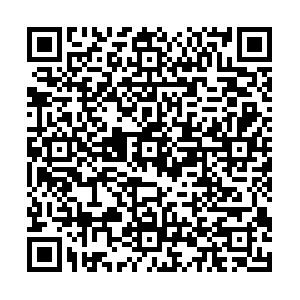Association between family screen environment and screen content for preschool children in Shanghai
-
摘要:
目的 了解上海市学龄前儿童屏幕暴露内容现状及其与家庭屏幕环境的关联,为家庭屏幕管理提供科学依据。 方法 于2023年4—6月,采用方便抽样法抽取上海市徐汇区及浦东新区各1家幼儿园共36个班级349名4~6岁学龄前儿童,采用在线问卷调查社会人口学特征及家庭屏幕环境,儿童屏幕暴露采用日记法进行调查,由家长在7 d内进行记录。采用多元Logistic回归分析儿童屏幕内容的相关因素。 结果 儿童平均每日屏幕暴露时长(61.2±40.2)min,教育类屏幕暴露平均每日(12.4±17.6)min,80.8%的儿童以非教育类屏幕内容为主。4~6岁男、女童观看教育类屏幕内容时长占其总屏幕暴露时长分别为20.1%,14.7%;21.3%,21.9%;20.6%,26.9%。多元Logistic回归分析结果显示,儿童5岁(OR=0.49,95%CI=0.25~0.96)及6岁年龄组(OR=0.45,95%CI=0.21~0.95)观看非教育类内容为主的风险较4岁组儿童低(P值均 < 0.05),孩子哭闹时偶尔(OR=2.02,95%CI=1.09~3.75)、有时(OR=4.50,95%CI=1.70~11.90)使用电子设备安抚和孩子使用电子产品时家长不陪伴(OR=1.81,95%CI=1.01~3.24)与儿童观看非教育类屏幕内容更多均呈正相关(P值均 < 0.05)。 结论 上海市学龄前儿童非教育性屏幕暴露较多,家庭屏幕环境及亲子交互与儿童观看非教育性屏幕内容有关。应制定家庭屏幕管理策略,规范儿童屏幕暴露行为,使电子设备在儿童成长过程中发挥正面作用。 Abstract:Objective To investigate the current status of screen exposure among preschool children in Shanghai and its association with family screen environment, so as to provide a scientific basis for family screen management. Methods Using a convenient sampling method, a total of 349 preschool children aged 4-6 years were selected from 36 kindergarten classes in Xuhui District and Pudong New Area in Shanghai during April to June in 2023. Demographic characteristics and family screen environment were surveyed through an online questionnaire. Screen exposure of children was assessed using a diary method, with parents recording the activities over a 7-day period. Multiple Logistic regression analysis was employed to identify factors influencing children's screen content. Results The average daily screen exposure time for children was (61.2±40.2) minutes, with an average of (12.4±17.6) minutes spent on educational screen content, 80.8% predominantly watched non-educational screen content. The percentages of time spent on educational screen content for 4-year-old boys, 4-year-old girls, 5-year-old boys, 5-year-old girls, 6-year-old boys, and 6-year-old girls were 20.1%, 14.7%, 21.3%, 21.9%, 20.6%, and 26.9%, respectively. Multivariate Logistic regression showed that children aged 5-year-old (OR=0.49, 95%CI=0.25-0.96) and 6-year-old (OR=0.45, 95%CI=0.21-0.95) were negatively associated with more non-educational screen content (P < 0.05). However, occasional (OR=2.02, 95%CI=1.09-3.75) and sometimes (OR=4.50, 95%CI=1.70-11.90) using electronic devices to calm young child when crying, as well as children using electronic devices without adult supervision (OR=1.81, 95%CI=1.01-3.24) were positively associated with more non-educational screen content (P < 0.05). Conclusions Preschool children in Shanghai exhibit high exposure to non-educational screen content, and family screen environment and parent-child interaction are associated with non-educational screen exposure. Strategies for family screen management should be developed to regulate children's screen exposure behaviors, allowing electronic devices to play a positive role in their developmental process. -
Key words:
- Fixation, ocular /
- Environment /
- Regression analysis /
- Child, preschool
1) 利益冲突声明 所有作者声明无利益冲突。2) 孙艺与余涛为共同第一作者。 -
表 1 不同组别学龄前儿童屏幕暴露内容构成比较
Table 1. Comparison of constituent ratios of different screen content among preschool children in different groups
组别 选项 人数 教育类 非教育类 χ2值 P值 性别 男 198 40(20.2) 158(79.8) 0.17 0.68 女 151 27(17.9) 124(82.1) 年龄/岁 4 146 21(14.4) 125(85.6) 3.76 0.15 5 125 28(22.4) 97(77.6) 6 78 18(23.1) 60(76.9) 孩子卧室是否有电子设备 是 163 38(23.3) 125(76.7) 2.86 0.09 否 186 29(15.6) 157(84.4) 孩子睡前是否会使用电子设备 从不 185 40(21.6) 145(78.4) 0.33* 偶尔 90 19(21.1) 71(78.9) 有时 29 4(13.8) 25(86.2) 经常 30 2(6.7) 28(93.3) 总是 15 2(13.3) 13(86.7) 孩子哭闹时是否使用电子设备安抚 从不 110 31(28.2) 79(71.8) 0.02* 偶尔 152 28(18.4) 124(81.6) 有时 67 6(9.0) 61(91.0) 经常 14 1(7.1) 13(92.9) 总是 6 1(16.7) 5(83.3) 孩子吃饭时是否使用电子设备/看电视 从不 126 33(26.2) 93(73.8) 0.03* 偶尔 133 23(17.3) 110(82.7) 有时 44 7(15.9) 37(84.1) 经常 39 2(5.1) 37(94.9) 总是 7 2(28.6) 5(71.4) 孩子使用电子产品时家长是否陪伴 是 118 30(25.4) 88(74.6) 3.87 0.05 否 231 37(16.0) 194(84.0) 看完视频/玩电子游戏后和家长沟通 从不 18 3(16.7) 15(83.3) 0.43* 偶尔 104 25(24.0) 79(76.0) 有时 110 22(20.0) 88(80.0) 经常 93 15(16.1) 78(83.9) 总是 24 2(8.3) 22(91.7) 注: ()内数字为构成比/%;*表示使用Fisher精确检验。 表 2 不同年龄段男女童各种屏幕内容暴露时长/min
Table 2. Exposure duration of screen contents exposure among preschool children of different age groups by gender/min
年龄/岁 性别 屏幕时长 短视频类 教育类 休闲视频类 电子游戏类 4 男 57.7 6.0(10.4) 11.6(20.1) 32.3(56.0) 7.8(13.5) 女 64.5 7.0(10.9) 9.5(14.7) 42.0(65.1) 6.0(9.3) 5 男 64.3 7.3(11.4) 13.7(21.3) 36.2(56.3) 7.1(11.0) 女 64.0 8.1(12.7) 14.0(21.9) 37.4(58.4) 4.5(7.0) 6 男 65.0 4.1(6.3) 13.4(20.6) 36.8(56.6) 10.7(16.5) 女 49.8 4.0(8.0) 13.4(26.9) 27.3(54.8) 5.1(10.2) 注: ()内数字为构成比/%。 表 3 学龄前儿童屏幕暴露内容相关因素的Logistic回归分析(n=349)
Table 3. Logistic regression analysis on the related factors of screen content among preschool children(n=349)
常量与自变量 选项 β值 标准误 Wald χ2值 OR值(95%CI) P值 常量 0.56 0.85 0.29 0.59 总屏幕时长 0.01 0.01 3.07 1.01(1.00~1.02) 0.08 年龄/岁 4 1.00 5 -0.71 0.34 4.38 0.49(0.25~0.96) 0.04 6 -0.80 0.38 4.40 0.45(0.21~0.95) 0.04 孩子哭闹时是否使用电子设备安抚 从不 1.00 偶尔 0.70 0.32 4.98 2.02(1.09~3.75) 0.03 有时 1.50 0.50 9.17 4.50(1.70~11.90) < 0.01 经常 1.76 1.09 3.63 5.80(0.69~48.68) 0.11 总是 0.96 1.15 0.44 2.14(0.22~20.55) 0.51 孩子使用电子产品时家长是否陪伴 是 1.00 否 0.59 0.30 4.00 1.81(1.01~3.24) 0.04 注:总屏幕时长为连续型变量。 -
[1] KABALI H K, IRIGOYEN M M, NUNEZ-DAVIS R, et al. Exposure and use of mobile media devices by young children[J]. Pediatrics, 2015, 136(6): 1044-1050. doi: 10.1542/peds.2015-2151 [2] KILIÇ A O, SARI E, YUCEL H, et al. Exposure to and use of mobile devices in children aged 1-60 months[J]. Eur J Pediatr, 2019, 178(2): 221-227. doi: 10.1007/s00431-018-3284-x [3] PEDERSEN J, RASMUSSEN M G, NELAND M, et al. Screen-based media use and blood pressure in preschool-aged children: a prospective study in the Odense child cohort[J]. Scand J Public Health, 2021, 49(5): 495-502. doi: 10.1177/1403494820914823 [4] REYNA-VARGAS M E, PARMAR A, LEFEBVRE D L, et al. Longitudinal associations between sleep habits, screen time and overweight, obesity in preschool children[J]. Nat Sci Sleep, 2022, 14: 1237-1247. doi: 10.2147/NSS.S363211 [5] SAMPASA-KANYINGA H, COLMAN I, GOLDFIELD G S, et al. Combinations of physical activity, sedentary time, and sleep duration and their associations with depressive symptoms and other mental health problems in children and adolescents: a systematic review[J]. Int J Behav Nutr Phys Act, 2020, 17(1): 72. doi: 10.1186/s12966-020-00976-x [6] KUSHIMA M, KOJIMA R, SHINOHARA R, et al. Association between screen time exposure in children at 1 year of age and autism spectrum disorder at 3 years of age: the Japan environment and children's study[J]. JAMA Pediatr, 2022, 176(4): 384-391. doi: 10.1001/jamapediatrics.2021.5778 [7] MADIGAN S, MCARTHUR B A, ANHORN C, et al. Associations between screen use and child language skills: a systematic review and Meta-analysis[J]. JAMA Pediatr, 2020, 174(7): 665-675. doi: 10.1001/jamapediatrics.2020.0327 [8] CAVALLI E, ANDERS R, CHAUSSOY L, et al. Screen exposure exacerbates ADHD symptoms indirectly through increased sleep disturbance[J]. Sleep Med, 2021, 83: 241-247. doi: 10.1016/j.sleep.2021.03.010 [9] CONNERS-BURROW N A, MCKELVEY L M, FUSSELL J J. Social outcomes associated with media viewing habits of low-income preschool children[J]. Early Educ Develop, 2011, 22(2): 256-273. doi: 10.1080/10409289.2011.550844 [10] WANG H, ZHAO J, YU Z, et al. Types of on-screen content and mental health in kindergarten children[J]. JAMA Pediatr, 2024, 178(2): 125-132. doi: 10.1001/jamapediatrics.2023.5220 [11] GRIFFITH S F, HANSON K G, ROLON-ARROYO B, et al. Promoting early achievement in low-income preschoolers in the United States with educational apps[J]. J Child Med, 2019, 13(3): 328-344. doi: 10.1080/17482798.2019.1613246 [12] COYNE S M, RADESKY J, COLLIER K M, et al. Parenting and digital media[J]. Pediatrics, 2017, 140(Suppl 2): S112-S116. [13] LINDER L K, MCDANIEL B T, STOCKDALE L, et al. The impact of parent and child media use on early parent-infant attachment[J]. Infancy, 2021, 26(4): 551-569. doi: 10.1111/infa.12400 [14] ASPLUND K M, KAIR L R, ARAIN Y H, et al. Early childhood screen time and parental attitudes toward child television viewing in a low-income latino population attending the special supplemental nutrition program for women, infants, and children[J]. Child Obes, 2015, 11(5): 590-599. doi: 10.1089/chi.2015.0001 [15] SCHMIDT M E, HAINES J, O'BRIEN A, et al. Systematic review of effective strategies for reducing screen time among young children[J]. Obesity (Silver Spring), 2012, 20(7): 1338-1354. doi: 10.1038/oby.2011.348 [16] KAUR N, GUPTA M, KIRAN T, et al. Development and evaluation of the digital-screen exposure questionnaire (DSEQ) for young children[J]. PLoS One, 2021, 16(6): e0253313. doi: 10.1371/journal.pone.0253313 [17] NGUYEN A, BAVELIER D. Play in video games[J]. Neurosci Biobehav Rev, 2023, 153: 105386. doi: 10.1016/j.neubiorev.2023.105386 [18] DA-YONG Z, ZHAN S. Short video users' personality traits and social sharing motivation[J]. Front Psychol, 2022(13): 1046735. [19] MADIGAN S, BROWNE D, RACINE N, et al. Association between screen time and children's performance on a developmental screening test[J]. JAMA Pediatr, 2019, 173(3): 244-250. doi: 10.1001/jamapediatrics.2018.5056 [20] ZHAO J, YU Z, SUN X, et al. Association between screen time trajectory and early childhood development in children in China[J]. JAMA Pediatr, 2022, 176(8): 768-775. doi: 10.1001/jamapediatrics.2022.1630 [21] JING M, YE T, KIRKORIAN H L, et al. Screen media exposure and young children's vocabulary learning and development: a Meta-analysis[J]. Child Dev, 2023, 94(5): 1398-1418. doi: 10.1111/cdev.13927 [22] HILL D, AMEENUDDIN N, REID CHASSIAKOS Y L, et al. Media and young minds[J]. Pediatrics, 2016, 138(5): e20162591. doi: 10.1542/peds.2016-2591 [23] RODRIGUES D, GAMA A, MACHADO-RODRIGUES A M, et al. Social inequalities in traditional and emerging screen devices among Portuguese children: a cross-sectional study[J]. BMC Public Health, 2020, 20(1): 902. doi: 10.1186/s12889-020-09026-4 [24] 陈敏, 张红梅, 康淑蓉, 等. 上海市闵行区3~6岁儿童屏幕暴露现况及影响因素研究[J]. 中国儿童保健杂志, 2024, 32(1): 26-30. https://www.cnki.com.cn/Article/CJFDTOTAL-ERTO202401006.htmCHEN M, ZHANG H M, KANG S R, et al. Status quo of screen exposure and its determinants in 3-to 6-year-old children in Minhang District, Shanghai[J]. Chin J Child Health Care, 2024, 32(1): 26-30. (in Chinese) https://www.cnki.com.cn/Article/CJFDTOTAL-ERTO202401006.htm [25] AXELSSON E L, PURCELL K, ASIS A, et al. Preschoolers' engagement with screen content and associations with sleep and cognitive development[J]. Acta Psychol (Amst), 2022, 230: 103762. -

 点击查看大图
点击查看大图
计量
- 文章访问数: 382
- HTML全文浏览量: 184
- PDF下载量: 34
- 被引次数: 0





 下载:
下载: